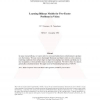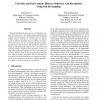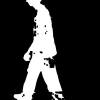486 search results - page 1 / 98 » Learning bilinear models for two-factor problems in vision |
CVPR
1997
IEEE
13 years 9 months ago
1997
IEEE
In many vision problems, we want to infer two (or more) hidden factors which interact to produce our observations. We may want to disentangle illuminant and object colors in color...
IJCV
2000
13 years 4 months ago
2000
We present an algorithm to estimate the parameters of a linear model in the presence of heteroscedastic noise, i.e., each data point having a different covariance matrix. The algor...
BMVC
2010
13 years 2 months ago
2010
We introduce a novel bilinear boosting algorithm, which extends the multi-class boosting framework of JointBoost to optimize a bilinear objective function. This allows style param...
FGR
2004
IEEE
13 years 8 months ago
2004
IEEE
Human Identification using gait is a challenging computer vision task due to the dynamic motion of gait and the existence of various sources of variations such as viewpoint, walki...
CVPR
2006
IEEE
14 years 6 months ago
2006
IEEE
Human identification from gait is a challenging task in realistic surveillance scenarios in which people walking along arbitrary directions are shot by a single camera. In this pa...



